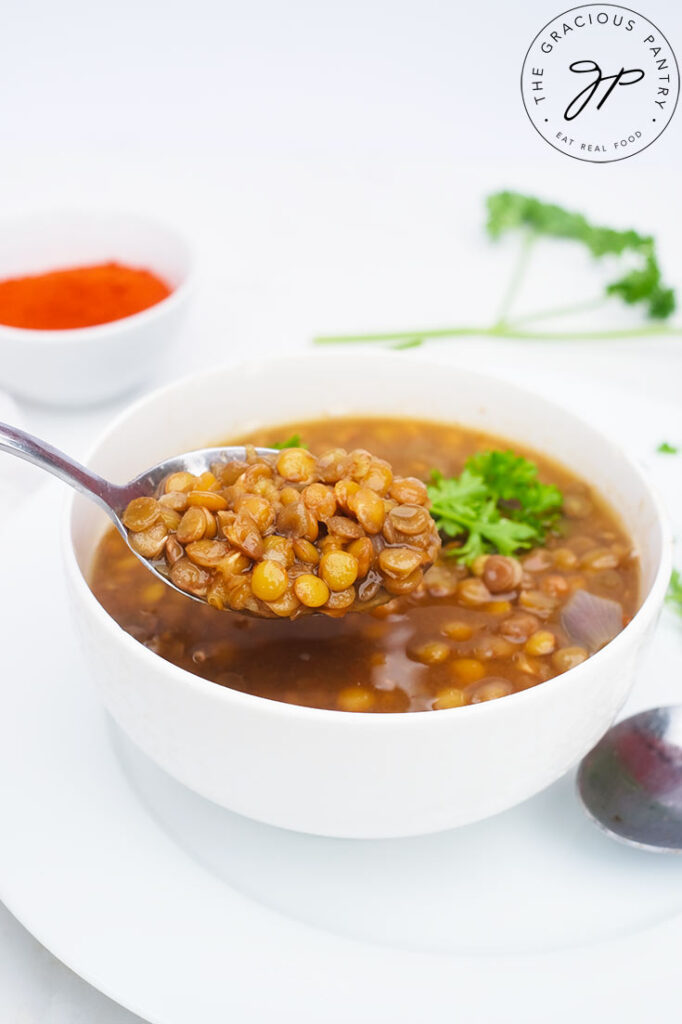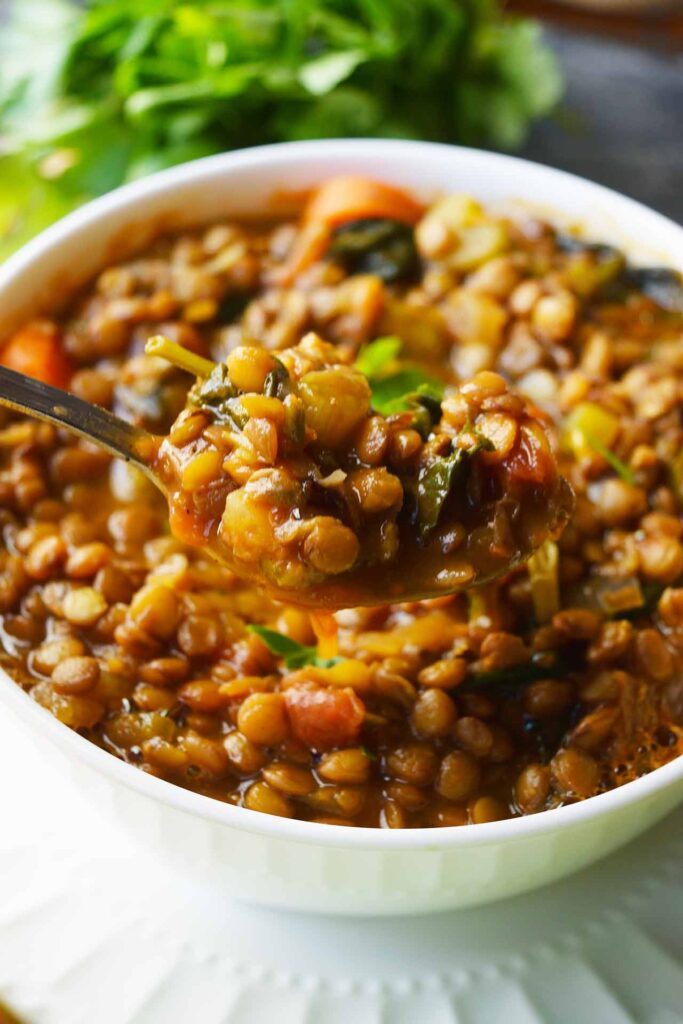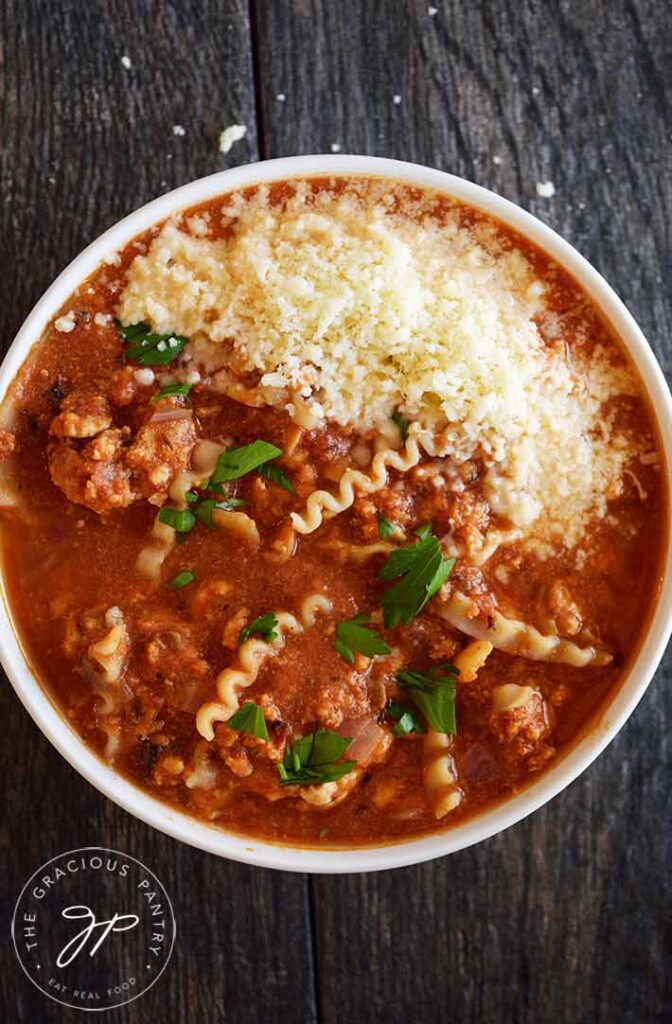How to Make Soup From Scratch in 5 Easy Steps
Every culture around the world has soup. It comforts us when we’re sick. It warms us up on cold nights. And it’s amenable to any diet on earth, whether you’re vegan, gluten-free, or want meat or fish at every meal.
Soups look like they should be the easiest thing to make on earth. Cut up a bunch of veggies, simmer them in some broth along with shredded meat, season everything, and serve. But the magic is in the process. Otherwise, you may end up with a thin soup with little flavor.

Types of Soups
There is a vast range of soups. There are cooked soups and uncooked soups. Some are puréed. We have vegan, vegetarian, gluten-free, dairy-free, keto, paleo, and meaty soups. So, how do we boil it all down (no pun intended) to a few simple steps to make almost any soup?
I let the process lead the way and divide the world of soups into three camps.
- Uncooked soups
- Cooked brothy soups
- Cooked creamy soups
Uncooked Soups
Uncooked soups typically involve throwing ingredients into a high-powered blender or food processor and pulsing until you reach the desired texture. The soup is then poured into a container to chill for as long as overnight and then served with garnishes.
An example of this kind of soup is gazpacho and many fruit-based soups. They’re among the easiest soups to make.
Cooked Brothy Soups
These soups have a broth base and can be chunky, thin, or puréed. Pasta, beans, meat, or rice are added for a more hearty brothy soup or kept simple with various vegetables.
These soups include consummé, chicken soup, lentil soup, puréed butternut squash and sweet potato soup, and ramen.

Cooked Creamy Soups
Creamy soups are made similarly to brothy soups with one big difference. They typically have a roux added to thicken the soup. And the ingredients include heavy cream, half-and-half, whole milk, nut-based milk, or coconut milk.
These soups include bisques, chowders, and some chicken and vegetable soups.
Equipment
Depending on the soup you’re making, here is a list of equipment you should have for soups cooked on the stovetop.
Chef’s knife: This knife works well for cutting up meats, vegetables, and herbs.
Large soup pot: The pot should be heavy-bottomed, such as a Dutch oven, made with stainless steel or ceramic. Do not use an aluminum pot.
Mesh strainer: A round strainer that fits over large bowls and pots is ideal for straining vegetables and herbs for consummé and puréed soups.
High-powered blender or stick blender: These are needed to entirely or partially purée the soup. The high-powered blender is best for any soup you want to purée into a smooth, silky soup.
Basic Recipe Steps in Making Cooked Soups on the Stovetop
Below are the five basic steps for making any soup, two of which are optional as they depend on the type of soup you’re making.
The cooking time for making soup can vary from 45 minutes to 3 hours, depending on the soup. But it’s best to simmer soups for at least 30 minutes to yield the best flavor.

Step 1 – The Aromatics: Create a Foundation of Flavor
Add a dollop or two of olive oil to the pot to cook the entire soup and warm it up over medium heat. Dice a combination of aromatics and add to the pot. Sauté until softened. Add the garlic at the end to prevent it from burning.
Aromatics are crucial components in building the flavors in any soup. They include:
- Onion
- Celery
- Carrot
- Leeks
- Garlic
When using a combination of onion, celery, and carrots, use a ratio of 2 cups onion to 1 cup celery to 1/3 cup carrots.
Once the aromatics soften, add additional flavor components and cook long enough to sear them, such as:
- Chopped bacon
- Cubes of beef to sear
- Ground beef, chicken, turkey, or ground plant-based meat substitutes
- Diced peppers
Drain off any grease from the meats. Add dried herbs and spices such as oregano, thyme, chili powder, paprika, cumin, cinnamon, kosher salt, or black pepper. Tomato paste is also often added at this stage as a flavor builder.
Cook until aromatic. You may see a brown coating on the bottom of the pot called the fond. Think of fond as a concentrated flavor.
Step 2 – Add Broth or Stock, Main Ingredients, and Simmer
Increase the heat to medium-high, and add the broth and other cooking liquids. Scrape up the fond from the bottom of the pot so it can be absorbed into the liquid.
A good rule of thumb for the amount of broth to add is 4 cups for every 8 cups of raw vegetables, cooked beans, grains, or meat. If you prefer a thicker soup, go with 4 cups of broth for every 6 cups of solids. Add more liquid if the rice or beans will cook in the soup.
Common broths and general cooking liquids include:
- Homemade vegetable broth
- Chicken broth or chicken stock (homemade is best)
- Beef broth or beef stock (ideally homemade)
- Fish stock (homemade if possible)
- Clam juice
- Better Than Bouillon – intensely flavored pastes that you dilute in water
- Tomato sauce or canned diced tomatoes and their liquid, especially fire-roasted tomatoes
- Coconut milk
Add the remaining ingredients except any dairy ingredients. Some beans, particularly lentils, rice, and pasta, can be cooked in the soup while it simmers.

Ingredients added at this stage can include:
- Beans
- Rice
- Pasta
- Shredded chicken from a rotisserie chicken
- Fish (uncooked)
- Greens, such as kale
- Fresh vegetables such as cauliflower, broccoli, green beans, butternut squash, corn, and tomatoes
- White potatoes and sweet potatoes
- Remaining dried herbs, including a bay leaf and dried spices
- Parmesan cheese rind
Simmer the soup for at least 30 minutes to reduce the liquid and intensify flavors.
Step 3 – Make a Roux (for Creamy Soups)
A roux, pronounced “roo,” is a French technique commonly used to thicken creamy soups and sauces. These are the three easy steps to make a roux:
- Measure equal amounts of flour and fat (usually butter). Melt the butter in a small skillet over medium-low heat and whisk in the flour. Whisk until a loose paste forms and the flour is lightly browned.
- Gradually whisk enough broth or milk into the paste to create a slurry.
- Gently heat to a very low simmer, and add back into the soup when the slurry thickens into a sauce.
Step 4 – Purée the Soup (Optional)
For completely puréed soups, pour the contents of the soup pot into the container of a high-powered blender. Purée the soup first on “low” to blend the soup, then switch to “high” to purée.
Place a round mesh strainer over the soup pot, and pour the puréed soup through it to catch any lumps.
For a partially puréed soup, blend with a stick blender until you have the desired consistency.
Step 5 – Finishing Touches
Stir in dairy products, such as cream and grated cheeses, and adjust for any seasoning. Rewarm the soup if needed, but be careful not to bring the soup back to a boil for creamy soups.
As a finishing touch, a squeeze of lemon juice or lime juice sharpens flavors, and a drizzle of balsamic vinegar adds surprising depth.
Garnish with chopped fresh parsley, thinly sliced scallions, a dollop of sour cream, croutons, or a sprinkle of parmesan cheese.

General Tips for Making Any Soup
- Be efficient. Begin with the pot you want to end with.
- Season early. Add salt, dried herbs, and spices at the beginning of the recipe to fully absorb the flavors.
- No charring. Don’t char the vegetables, as they can make the finished soup bitter.
- Stagger adding ingredients. When adding ingredients to the broth, keep in mind their cooking rates and stagger when they’re added. For example, add chunks of sweet potato immediately, but hold off on adding greens until the end.
- Add umami. For a greater depth of flavor, add a hunk of Parmesan cheese rind to any soup. Remove it before serving.
- Too acidic. For soups that are too acidic, add a knob of butter.
- Too spicy. If your soup is too spicy, add lime juice, cream, cheese, mashed potatoes, or mashed beans, depending on the soup you’re making.
Storage Tips
Soups are easily stored, and I highly recommend always having a couple in the freezer for emergencies. Here are some guidelines.
- Store in the refrigerator: Cool the soup to room temperature and store it in an airtight container for 7-10 days, depending on the type of soup.
- Store in the freezer: Cool the soup to room temperature and store brothy soups in a freezer-safe airtight container for 1-2 months. Thaw in the refrigerator before rewarming on the stovetop. Note: When freezing creamy soups, freeze them before adding any dairy. Add these ingredients while the soup is reheating on the stovetop.
FAQ
How can I add more flavor to a homemade soup?
·Add some acid (lemon juice and balsamic vinegar are great options)
·Stir in a little soy sauce or miso
·Smoked paprika and oregano are excellent additions to most savory soups
·Use a broth that’s full of flavor, preferably homemade
·Make sure you’ve added enough salt to the soup
·Simmer the soup longer to concentrate the flavors further
Can I use frozen vegetables when making homemade soup?
Yes! In fact, it’s even better to use frozen vegetables when including out-of-season vegetables.
What soups don’t freeze well?
Soups containing dairy products can separate when they freeze, creating a grainy soup when thawed and reheated. It’s best to freeze these soups before adding cream, half-and-half, whole milk, roux, and cheese. Stir in the dairy products as the soup rewarms on the stovetop.
Go Make Your Best Homemade Soup
Now, you’re ready to make a great soup at home by just looking at the ingredients you have in your pantry, refrigerator, and freezer. You may even create your new favorite soup.
This article originally appeared on Pink When.

